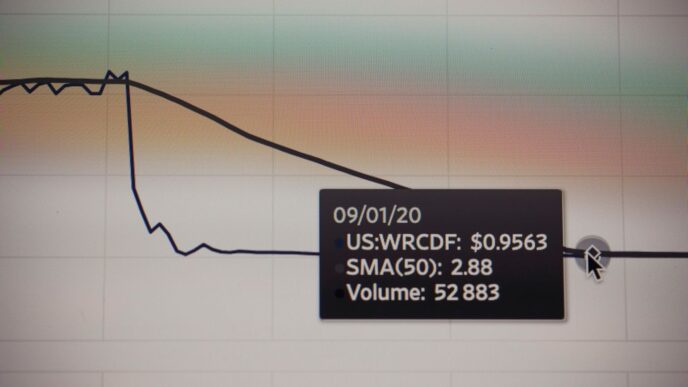Thinking about Starlink for your internet needs in 2025? It’s a question a lot of folks in rural areas are asking. We’ve seen a lot of changes with Starlink over the past few years, and the speeds you can expect are definitely part of that story. Let’s break down what the numbers have looked like and what might be coming down the line.
Key Takeaways
- Starlink speeds have gotten much better since it first launched, with download speeds often hitting over 100 Mbps and sometimes much higher.
- Upload speeds have also seen big improvements, though they might still be a bit slower than download speeds.
- Latency, which is how long it takes for data to travel back and forth, has dropped significantly, making things like video calls and gaming smoother.
- Newer Starlink hardware, like the Dish V4, generally offers faster speeds and lower latency compared to older versions.
- While Starlink is getting closer, consistently meeting the FCC’s definition of broadband for both download and upload speeds is still a challenge for some users.
Starlink Speed Evolution: A Look Back
When Starlink first rolled out, people were excited but also a bit skeptical. Could a satellite internet service really compete with what we were used to on the ground? The early days, around 2022, showed promise, but also some growing pains. We saw average download speeds hovering around 89 Mbps, which was pretty good for satellite, but uploads were often a struggle, rarely breaking 20 Mbps. Latency, a measure of delay, was also noticeable, typically around 60 milliseconds (ms).
Early Performance Metrics: 2022 Speeds
In 2022, Starlink was still finding its feet. While download speeds were decent, averaging close to 96 Mbps according to some tests, the upload speeds were significantly lower, often dipping below 10 Mbps. This made tasks that required sending data, like video calls or uploading large files, a bit frustrating. It felt like the system was still working out how to handle a growing number of users and the demands they placed on the network. The median download speed in Q1 2022 was nearly 96 Mbps, but uploads were closer to 10 Mbps.
Significant Gains in 2023
Things started to pick up steam in 2023. SpaceX was busy launching more satellites, expanding the constellation, and refining the technology. By 2023, average download speeds had climbed to about 130 Mbps, and uploads saw a healthy increase to around 15 Mbps. Latency also improved, dropping to about 50 ms. This year marked a noticeable step up in performance, making the service more reliable for everyday use.
Download and Upload Speed Trends
Looking at the trends, it’s clear that Starlink has been on an upward trajectory. After a dip in performance during parts of 2022, likely due to increased usage as more people signed up, speeds began to rebound and then surpass previous levels. By the end of 2023 and into early 2024, median download speeds were consistently hitting over 100 Mbps, with uploads also showing steady improvement. This consistent growth is a good sign for anyone relying on Starlink for their internet connection.
Understanding Starlink Speed in 2024
So, how’s Starlink performing these days, specifically in 2024? It’s been a journey, for sure. We’ve seen some pretty big leaps, especially when you compare it to the early days. Let’s break down what you can realistically expect.
Performance with Dishy V2
Even with the earlier Dishy V2 hardware, things were looking up in 2024. We’re talking about download speeds that consistently stayed above the 100 Mbps mark. On average, users were seeing around 113 Mbps for downloads, which is a solid jump. Uploads also got a nice boost, averaging close to 19 Mbps. That’s a pretty decent increase year over year. Latency, which is how long it takes for data to travel back and forth, also saw improvements, dropping to about 38 ms. This means things felt snappier, whether you were browsing or trying to get some work done.
Advancements with Dish V4
Now, if you’ve got the newer Dish V4 hardware, the numbers get even more impressive. Testing with this newer dish showed a significant leap. Average download speeds jumped to around 150 Mbps, with some tests even hitting peaks over 325 Mbps. Upload speeds were the best yet, averaging about 23 Mbps. And that latency? It dropped even further, hitting an average of just 29 ms. This hardware upgrade really made a difference, showing that Starlink is actively working on making the service faster and more responsive.
Latency Improvements Over Time
Latency is one of those things that can really make or break an internet experience, especially for things like video calls or online gaming. Starlink’s latency has been steadily getting better. While it’s still not quite at the super-low levels of fiber internet, the improvements are noticeable. We’ve seen median latency rates drop significantly from the early days. In some areas, tests showed latency as low as 38 ms, and with the newer hardware, it’s even dipping into the 10-20 ms range in many tests. This is a big deal because it means fewer frustrating delays and a smoother online experience overall. The expansion of ground stations has really helped cut down on the distance data has to travel, which directly impacts how quickly you get a response from websites and services.
Factors Influencing Starlink Speed
Starlink’s raw speed numbers keep moving up, but lots of different things can affect how fast your internet really feels. It isn’t just about what’s happening in orbit; there’s also a bunch going on down here on the ground.
Impact of Hardware Iterations
Each new version of Starlink’s equipment makes a real difference. If you’re still using one of the original Dishes, you’re probably not seeing the best speeds. Here’s what’s noticeable with hardware upgrades:
- Newer dishes (V4) consistently deliver higher download and upload speeds compared to legacy gear.
- Up-to-date user terminals have better antennas and can switch satellites faster, leading to fewer momentary slowdowns.
- The included Wi-Fi router gets smarter—later versions support things like Wi-Fi 6, which improves performance for all your devices.
If you’re not happy with your speeds, it might be time to check if a hardware upgrade is available.
Network Enhancements and Satellite Capacity
Starlink’s speed improvements aren’t just about the dish you have—they’re also driven by what’s flying overhead (and what’s new in the software powering those satellites). What’s changing:
- More satellites are going up all the time. With nearly 8,000 now in orbit, congestion has gone way down.
- Software tweaks have unclogged the works—updates in 2024 made a huge difference, especially during peak hours.
- Ground station upgrades matter too: more local infrastructure helps reduce bottlenecks for everyone on the system. Nearby stations mean you’re less likely to get routed across the country (or worse).
Here’s a simple table showing average speeds by year and major upgrade:
| Year | Avg Download (Mbps) | Avg Upload (Mbps) | Latency (ms) |
|---|---|---|---|
| 2022 | 89 | 10 | 60 |
| 2023 | 130 | 15 | 50 |
| 2024 (V2) | 113 | 19 | 38 |
| 2024 (V4) | 150–177 (up to 315) | 23–64 | 10–29 |
Geographic Saturation and Service Fees
Where you live—and how many of your neighbors have Starlink—also plays a big role in the experience. Here’s how it shakes out:
- Rural and remote regions still tend to get better speeds, just because there are fewer users per satellite.
- Crowded areas, especially in popular US states, can see temporary slowdowns during prime time as more people hop online.
- Starlink has experimented with tiered service fees in some places, where higher paying users get prioritized speeds.
- Weather also matters—a heavy storm can slow things down more than you might expect, making Starlink a bit less stable than fiber or cable on a rough day. (For more, see this explanation of how weather influences satellite internet.)
So, while Starlink keeps getting faster on average, speeds can still swing depending on your hardware, the satellites overhead, and what’s happening in your part of the world. That’s why reading recent speed reports and knowing what equipment you have is so important if you’re after the best performance.
Meeting Broadband Standards with Starlink
Starlink’s quest to provide real broadband has always been front and center. With federal programs and funding shifting focus to include satellite-based internet, it’s more important than ever to see how Starlink stacks up. Below, I’ll break down what matters most: speeds, how many users really get what’s promised, and how Starlink compares to regular wired options you’d find in the city or suburbs.
FCC Download and Upload Requirements
Before we get into the details, here’s a quick refresher: The FCC’s official definition of broadband is at least 100 Mbps download and 20 Mbps upload speeds. These aren’t just numbers pulled out of thin air—these are the standards internet companies have to hit if they want to call their service “broadband.” Why does this matter? Because public funding and a ton of government programs require providers to meet these bars.
FCC Broadband Standards for 2025
| Type | Minimum Speed Requirement | Starlink Median (Q3 2025) |
|---|---|---|
| Download | 100 Mbps | 104.7 Mbps |
| Upload | 20 Mbps | 14.8 Mbps |
As you can see, Starlink’s download does edge past the 100 Mbps mark, but upload speeds are lagging behind what the FCC asks for.
Percentage of Users Meeting Broadband Criteria
So how many people with Starlink can truly say they have broadband by federal standards? Turns out, not as many as you might guess.
- Only around 17% of Starlink users hit both the 100 Mbps download and 20 Mbps upload minimums set by the FCC.
- The problem isn’t with downloads—almost everyone clears that hurdle—but uploads are where things fall short.
- Numbers vary region by region. In areas with fewer users per satellite (think really rural), you’re more likely to see higher speeds.
Comparing Starlink to Terrestrial Networks
People always want to know: “Is Starlink as good as cable or fiber?” Here’s the reality in 2025:
- Fiber and cable providers regularly hit and exceed both FCC requirements, often with symmetrical speeds (same download and upload).
- Starlink has a clear edge over old-school satellite, DSL, and even some rural fixed wireless, mostly because of its much lower latency (usually under 50 ms except in Alaska or Hawaii).
- For truly remote or underserved areas, Starlink is punching above its weight, often being the only option for reaching close to broadband speeds.
But to keep expectations realistic, here’s a breakdown:
- Fiber: Usually gives 500 Mbps or way higher, uploads as quick as downloads.
- Cable: Often over 200 Mbps down, uploads sometimes lower than 20 Mbps but improving.
- Starlink: Over 100 Mbps download median, uploads a bit short, but solid for the average user.
So, if you live in a place where the best you can get is ancient DSL or nothing at all, Starlink is a game changer. But if you’ve got fiber or solid cable options, those are still faster and more reliable, especially if uploads or ultra-stable speed are what you care about.
Future Projections for Starlink Speed
So, what’s next for Starlink speeds? It’s not just about keeping things steady; SpaceX is clearly aiming for bigger and better things. They’re not just tweaking the current system; they’re building out entirely new generations of satellites.
Next-Generation Satellite Capabilities
SpaceX is already working on their third generation of satellites, with launches expected to start in the first half of 2026. These new birds are designed with gigabit-level throughput in mind. This means they’ll be able to handle a lot more data, which should translate to faster speeds for everyone. It’s a pretty big leap from where we are now, and it’s exciting to think about what that could mean for users, especially those in areas where internet is still a struggle. The company is also making moves to own more of its own spectrum, which could make the service even more reliable and less dependent on partnerships. This is a big deal for the future of satellite internet.
Potential for Gigabit Speeds
While we’re seeing solid improvements now, the real game-changer could be hitting gigabit speeds. With the new satellite tech on the horizon, it’s not out of the question. Imagine downloading huge files in seconds or streaming 8K video without a single buffer. It’s a lofty goal, but the progress so far suggests it’s achievable. We’ve already seen download speeds occasionally top 400 Mbps in some tests, so pushing towards gigabit speeds seems like the logical next step. This could really shake up the broadband landscape, offering a serious alternative to ground-based options for many people.
Direct-to-Cell Service Speed Expectations
Starlink’s direct-to-cell service is another area with a lot of potential. While current beta speeds are pretty modest, around 4 Mbps outdoors, projections are much higher. With enough satellites and the right regulatory setup, speeds could jump to about 24 Mbps per user beam. This service aims to bring cellular connectivity to areas that currently have none, using your existing phone. It’s not expected to replace terrestrial networks entirely, especially in populated areas where those networks are faster and more robust. However, for remote regions, it could be a lifesaver, providing basic connectivity where it was previously impossible. It’s important to remember that Starlink offers significantly faster satellite internet speeds compared to older satellite services, and this direct-to-cell offering is a different, though related, development.
Maximizing Your Starlink Speed Experience
So, you’ve got Starlink, and you’re wondering how to get the most out of it, right? It’s not just about plugging it in and hoping for the best. There are definitely a few things you can do to make sure you’re getting the speeds you expect, and maybe even a little more.
Router Upgrades and Wi-Fi 6 Benefits
Your Starlink kit comes with a router, and while it’s pretty decent, it’s worth knowing that it’s been upgraded to Wi-Fi 6. This is a big deal for your home network. Wi-Fi 6 means your devices can connect faster and more reliably to your router. Think smoother streaming, quicker downloads on your phone or laptop, and generally a better experience for all your connected gadgets. It doesn’t magically make Starlink’s internet connection itself faster, but it sure helps get that internet speed to your devices more efficiently. Plus, you get better range and support for more devices at once, which is handy if you’ve got a busy household.
Installation Options and Reliability
Where you put that dish really matters. Getting a clear view of the sky is the most important thing for a stable connection. Obstructions like trees or buildings can really mess with your signal. Starlink offers a few ways to get set up. You can do it yourself, which is usually pretty straightforward, especially with the newer, more portable dishes. Or, if you’re not keen on climbing ladders or drilling holes, they offer a professional installation service for a fee. Choosing the right spot and installation method can make a noticeable difference in how consistent your speeds are.
Consistency and Low-Speed Performance
Starlink speeds can vary, and that’s normal. Things like network congestion, the number of satellites overhead, and even the weather can play a role. While download speeds have gotten much better over the years, upload speeds and latency are still areas where there’s room for improvement, especially if you’re doing things like heavy video conferencing or online gaming.
Here’s a general idea of how speeds have trended:
- 2022: Average download speeds around 89 Mbps, uploads often below 20 Mbps, latency near 60 ms.
- 2023: Download speeds improved to about 130 Mbps, uploads around 15 Mbps, latency dropped to 50 ms.
- 2024 (Dish V2): Consistent downloads over 100 Mbps (avg. 113 Mbps), uploads near 19 Mbps, latency around 38 ms.
- 2024 (Dish V4): Download speeds jumped to an average of 150 Mbps, uploads hit 23 Mbps, and latency was impressively low at 29 ms.
Even with these improvements, it’s good to know that not every user consistently meets the FCC’s definition of broadband (100 Mbps download / 20 Mbps upload). While download speeds often exceed this, upload speeds can sometimes fall short. If you’re on a plan with reduced speeds, like the Residential Lite plan, expect speeds between 50-100 Mbps, and be aware that you might see slower performance during peak hours because your service is deprioritized. It’s all about managing expectations and understanding the factors that influence your connection.
So, What’s the Verdict on Starlink Speeds?
Looking back over the last few years, it’s pretty clear Starlink has come a long way. We’ve seen download speeds go from okay to pretty darn good, and upload speeds have gotten much better too. Latency, which is super important for things like gaming or video calls, has dropped significantly. While it might not always hit those super-high advertised speeds, the service has become way more reliable and consistent. Plus, with new hardware and software tweaks happening all the time, it seems like things are only going to keep improving. For folks in areas without good internet options, Starlink is definitely worth another look, especially as we head into 2025.
Frequently Asked Questions
How fast is Starlink internet, really?
Starlink speeds have gotten much better over time! In the past, download speeds might have been around 90 Mbps, but now they often reach over 150 Mbps, and sometimes even higher. Upload speeds have also improved, going from about 15 Mbps to over 20 Mbps. This means things like downloading files and streaming videos are smoother.
What is latency and why does it matter for Starlink?
Latency is like the delay between when you send a command and when the action happens online. For Starlink, lower latency is better. Early on, it was around 60 milliseconds (ms), but now it’s often under 30 ms. This makes online games and video calls feel more responsive.
Does Starlink meet the government’s definition of broadband?
The government considers broadband to be at least 100 Mbps for downloads and 20 Mbps for uploads. While Starlink’s download speeds often meet this, the upload speeds sometimes fall a bit short. This means not all Starlink users meet the full government standard, even though speeds are improving.
What makes Starlink speeds change?
Several things affect Starlink speeds. Newer equipment, like the Dish V4, generally offers faster speeds. Also, when more people in an area use Starlink, speeds can sometimes slow down a bit. SpaceX is constantly working to improve the network and add more satellites, which helps boost performance.
Can I get gigabit speeds with Starlink?
Starlink is working on next-generation satellites that could offer gigabit speeds (1000 Mbps). However, to get these super-fast speeds, you might need to buy new equipment when it becomes available. For now, speeds are generally below gigabit levels.
How can I get the best possible speed from my Starlink?
To get the best speeds, make sure your Starlink dish has a clear view of the sky without any obstructions. Using a newer router that supports Wi-Fi 6 can also help improve your local network speeds. Proper installation is key for a stable connection.














